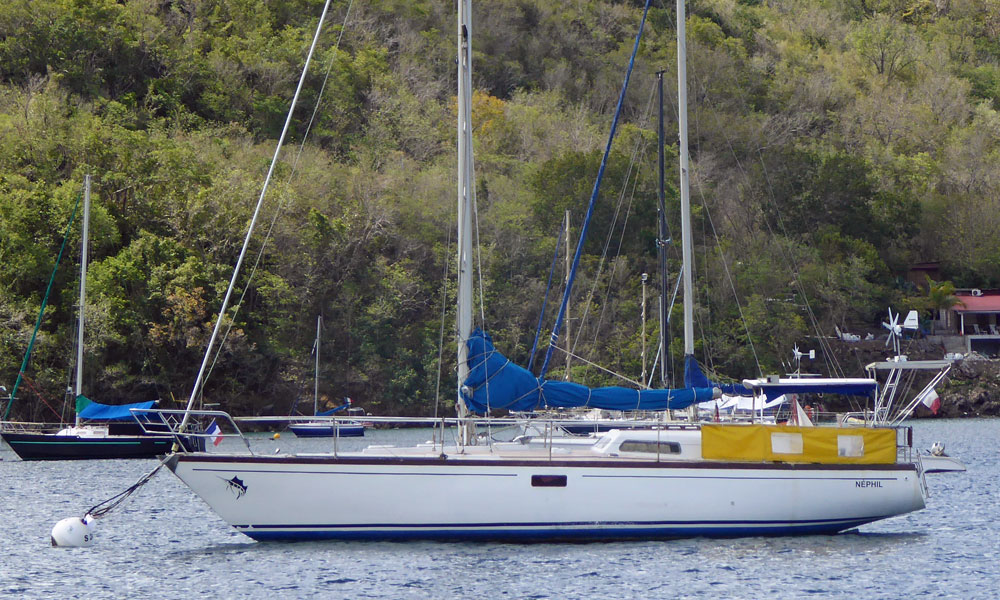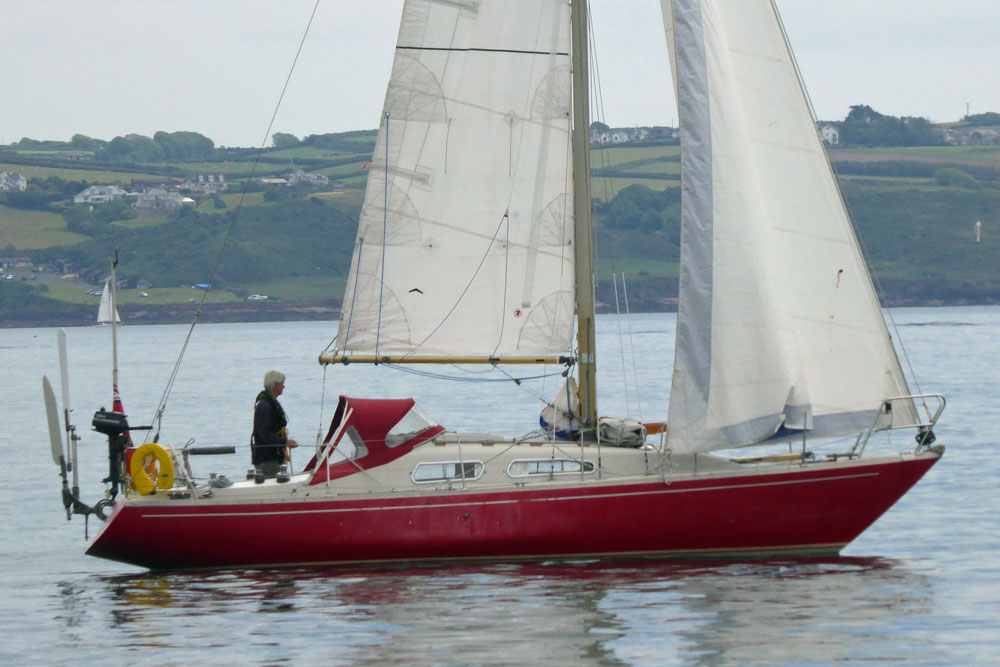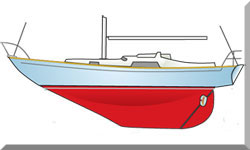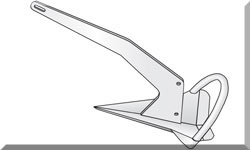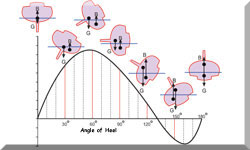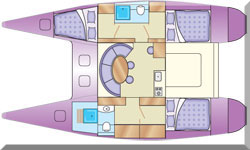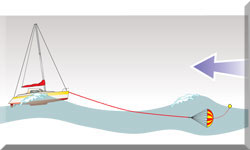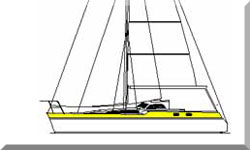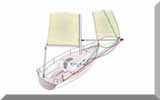- Home
- Jouet Sailboats
Jouet Sailboats: Your Guide to These French Cruisers
If you're into recreational sailing, or even just dreaming of life afloat, the name Jouet might not be the first that springs to mind, unlike some of today's mega-yacht builders.
Table of Contents
- Jouet: How it All Started
- What Makes a Jouet Sailboat Special?
- How Jouet Sailboats Are Built (& Why They Last)
- Popular Jouet Sailboat Models Over the Years
- How Jouet Sailboats Handle on the Water
- Stepping Inside: Jouet Sailboat Interiors
- Why Jouet Sailboats are Still Popular
- Things to Consider When Buying a Jouet
- Final Thoughts on Jouet Sailboats
But here's the thing: this French brand actually holds a pretty significant spot in sailboat history. Through their diverse range, from early wooden beauties to pioneering fiberglass models, Jouet sailboats introduced countless folks to the simple joys of cruising and exploring coastlines. Their approach was always wonderfully practical, putting accessibility and solid performance for the everyday sailor right at the top.
Jouet: How It All Started
The Jouet story began way back in 1925, founded by a French yacht designer and builder named Jean-Pierre Jouët. His big idea was to create well-designed, truly functional sailboats. And that vision really guided the company for decades. Operating out of France, Jouet quickly became a respected name across the European sailing scene. A pivotal moment came in 1970 when Jouet, alongside another French builder, Lanaverre, became part of Yachting France. The Jouet name actually stuck around for several more years under this new umbrella, with production continuing until the whole enterprise eventually wrapped up around 1984. So, no, you won't find brand-new Jouet sailboats hitting the water today. But their influence? It's still very much alive, sailing on in the many boats you'll still spot gracing coastlines worldwide. That's a real testament to their sturdy build and sensible design. And if you're thinking about used Jouet sailboats, you'll discover a surprisingly active and friendly market for these much-loved vessels.
What Makes a Jouet Sailboat Special?
Jouet's whole philosophy behind design was focused on crafting reliable, capable sailing boats for just about anyone. They worked with some pretty notable designers over the years, including Jean-Pierre Jouët himself, plus talents like Eugène Cornu, Philippe Harlé, Paul Elvström, Philippe Briand, and Daniel Tortarolo. But no matter who was at the drawing board, the main goal remained rock-solid: deliver boats that were easy to handle, comfortable, and dependable for coastal cruising – and occasionally, even for more adventurous voyages.
One of the biggest shifts in their design journey, a move that really mirrored what was happening across the wider industry, was the switch from traditional wooden builds to fiberglass. Jouet jumped on fiberglass early in France, which just goes to show their practical approach to new ideas. This big change led to more consistent production, simpler upkeep, and honestly, made sailing a whole lot more accessible for everyone. Now, while specific "signature design elements" certainly popped up differently across various models and designers, there's a common thread you'll often notice in Jouet sailboats: they tend to maximize interior volume for their length. This frequently means a wider beam and an aesthetic that leans more towards practicality than super-sleek lines. You'll also find many models sporting fin keels for good maneuverability, often made of iron. This strikes a nice balance between how the boat performs and how easy it is to manage for cruising.
How Jouet Sailboats Are Built (& Why They Last)
When we talk about how these boats were put together, early Jouet models, as you'd expect for the time, were built traditionally from wood. But as soon as fiberglass became a real option, they wasted no time embracing GRP (Glass Reinforced Plastic) for their hulls and decks. This switch immediately offered big perks like less maintenance and a lot more durability, which naturally made them super popular with recreational sailors. While fancy techniques like vacuum infusion or cutting-edge composite materials weren't really around back then, Jouet sailboats were generally constructed using tried-and-true hand lay-up methods with polyester resins and E-Glass fiberglass cloth. The overriding focus was on solid, sensible construction that was built to endure.
It's fair to say the brand isn't exactly famous for cutting-edge, high-performance racing machines. Still, their build quality was generally considered plenty robust for what they were intended to do. Of course, like any production boat from that era, the quality of the finish work could vary a bit. But the fundamental hull and deck structures? Those were definitely engineered for durability. That's precisely why so many Jouet sailboats are still cruising happily decades down the line.
Popular Jouet Sailboat Models Over the Years
Jouet truly churned out a diverse collection of sailboats during its active years, everything from small dinghies to some pretty substantial cruising yachts. Watching their models evolve really gives you a glimpse into the changing demands of the sailing market back then.
Among their truly foundational models, the Belouga always stands out. This was a 6.5m wooden sloop launched in 1944, and it's quite remarkable as one of France's first mass-produced sailboats. Then came the Golif in 1961, another hugely significant design. This marked Jouet's big leap into fiberglass, making it one of France's very first fiberglass cruising yachts. Its distinctive long cabin trunk and wide beam really showcased the era's push for more interior space.
Moving on to their more popular and widely successful designs, the Jouet 20 (sometimes known as the Sheriff 600) and the Jouet 24 were definite favorites. These smaller cruisers offered a really nice balance of size, performance, and interior living space for their length. If you needed more room, the Jouet 920 and Jouet 1300 presented larger cruising options, clearly designed for longer trips and offering considerably more comfort. Take the Jouet 920, for instance; it was often praised for its surprisingly roomy interior, featuring two cabins and a comfortable main saloon. The Jouet 1300, designed by Philippe Briand, aimed for a bit more zip in its performance, coming with a masthead sloop rig and a fin keel with a skeg-hung rudder. You might also come across other notable models like the Jouet Regent, a sturdy, heavier-displacement cruising boat, or the Jouet Triton, which was known for its particularly spacious and comfy interior.
As the years rolled on, Jouet sailboats naturally updated their designs, bringing in more modern features but always sticking to their core values of practicality. This meant shifts from long keels to fin keels for better maneuverability, and tweaks to beam and internal volume to truly get the most out of the interior space – all clearly reflecting the bigger picture trends in cruising yacht design.
How Jouet Sailboats Handle on the Water
Generally speaking, Jouet sailboats are often thought of as pretty steady and forgiving boats, making them perfect for coastal cruising and just enjoying a relaxed day sail. While no one ever designed them to be hot-shot racing machines, they do offer very respectable sailing characteristics for their category. Their focus on stability and being easy to manage made them genuinely approachable for just about any sailor, regardless of experience level.
For example, the Jouet 24 is often described as having good maneuverability, which comes courtesy of its fin keel. Its motion comfort ratio also suggests it's a reasonably comfortable ride when things get a bit lumpy offshore, especially for a coastal cruiser. The larger Jouet 1300, with its higher Sail Area/Displacement Ratio, definitely hints at a more lively performance compared to the smaller models, suggesting it can certainly hold its own against similarly sized cruisers out there.
Now, most Jouet sailboats were, let's be honest, primarily intended for cruising along the coast or close to shore. However, some of the bigger models, particularly those with a Capsize Screening Formula below 2.0 (like the Jouet 1300), would absolutely be considered more capable for proper offshore or longer-distance passages. Features that support this typically include more robust construction and sensible, well-balanced rigging.
Stepping Inside: Jouet Sailboat Interiors
When you step inside a Jouet sailboat, especially one of the larger ones, you'll immediately notice the interiors are designed with practicality and comfort as top priorities. The overall look tends to be quite functional, often featuring traditional woodwork and layouts that really squeeze out every bit of usable space. While they weren't striving for outright luxury, the clear aim was to create comfortable and truly livable spaces for cruising.
You'll usually find distinct areas for sleeping, cooking, and eating, rather than one big open-plan design. Cabins are generally well-sized for the boat's overall dimensions, and the galleys are pretty practical for whipping up meals, whether you're at sea or anchored up. That focus on maximizing beam in many models often translated into surprisingly generous interior volume compared to some narrower, more performance-oriented designs of similar length. While headroom might be a tad snug on some of the smaller models like the Jouet 20, the larger yachts, such as the 920 and 1300, definitely offered more comfortable standing room.
Why Jouet Sailboats Are Still Popular
Jouet sailboats really carved out a solid niche for themselves as affordable and dependable cruising yachts. They appealed broadly to recreational sailors, families, and anyone just getting into boat ownership. Their reputation within the sailing community is generally that of a sensible, well-built brand that simply delivered excellent value.
If you're looking at the used Jouet sailboats market, you'll discover these boats often offer a fantastic entry point into boat ownership. That's thanks to their reasonable original price tag and their continued practicality. While their resale value might not always hit the highs of some very expensive, contemporary brands, their sturdy construction and practical design mean well-maintained examples tend to hold onto a fair portion of their worth.
You won't typically find one massive, formalized "Jouet Owners Association" like you might for some bigger brands. But fear not! Online forums and various communities dedicated to classic sailboats are brimming with discussions and resources for Jouet owners, which is great for sharing tips and experiences. Ultimately, Jouet's lasting contribution truly comes down to making sailing accessible and genuinely enjoyable for countless individuals. They proved that capable and comfortable cruising yachts don't, in fact, always need to come with an exorbitant price tag.
Things to Consider When Buying a Jouet
Now, while Jouet sailboats are certainly well-regarded for their practicality and solid value, it's always smart for prospective owners to approach things with a realistic mindset. Just like with any older production boat, you might encounter a few challenges. Common points to think about often involve the age of the original systems – things like electrical wiring, plumbing, and the engine – which could very well need some upgrading or just routine maintenance. Gelcoat crazing and osmosis are also possibilities on older fiberglass boats, though it's important to remember these aren't issues unique to Jouet.
The interior styling, while perfectly practical, might feel a bit dated to those used to more modern looks. Some folks might also find the finishes a touch less refined than what you'd see on ultra-high-end yachts. And if you're a performance-focused sailor, you might find some of the older, heavier displacement models to be less sprightly in lighter winds compared to more contemporary designs. But honestly, for their intended purpose of comfortable and stable cruising, these are generally pretty minor points. The real key for any prospective buyer is always a thorough survey and a clear understanding of the maintenance commitments that come with a boat of this age.
Final Thoughts on Jouet Sailboats
The Jouet series of sailboats truly represents a fascinating chapter in the story of French yacht building. Built on the straightforward principle of accessible, capable design, these boats really opened up the dream of sailing to so many. From pioneering fiberglass construction to delivering comfortable and practical interiors, Jouet consistently delivered on its promise. Though they're no longer being actively produced, Jean-Pierre Jouët's vision definitely lives on in the many Jouet sailboats that continue to ply waters around the globe today. For anyone out there seeking a reliable, honest, and truly pragmatic cruising sailboat with a bit of history, a Jouet might just be the perfect vessel to carry you on your next adventure.
Resources & References
Recent Articles
-
Planning Your Sailboat Liveaboard Lifestyle: An Ocean Sailor's Guide
Dec 06, 25 05:18 AM
Seasoned sailors share their methodical risk analysis for planning a secure Sailboat Liveaboard Lifestyle, covering financial, property, and relationship risks. -
Marine Cabin Heaters: The Expert’s Guide to Comfort & Safety at Sea
Dec 05, 25 06:52 AM
Choose the best Marine Cabin Heaters for your vessel. Expert advice on diesel, paraffin, and hot water systems for year-round cruising comfort. -
Marine Water Heating Systems: Free Hot Water from Your Boat's Engine
Dec 03, 25 05:06 PM
Tap into your engine's heat to get free hot water on board. An experienced ocean sailor's guide to marine water heating systems, calorifiers & safety.
